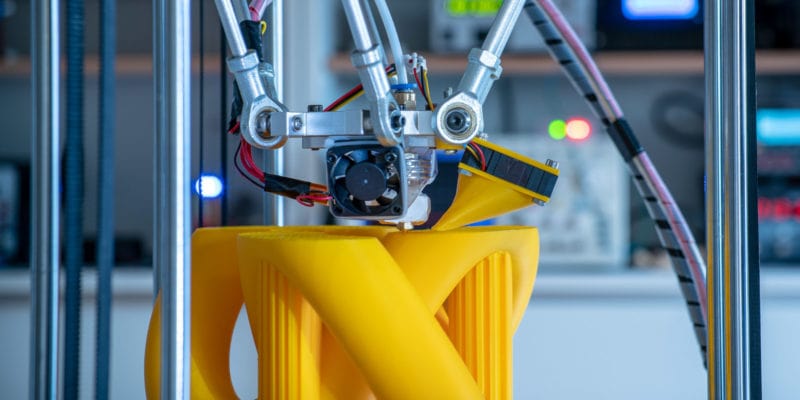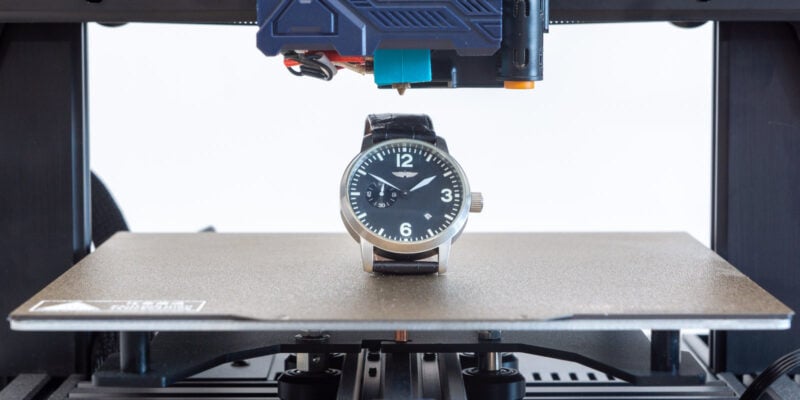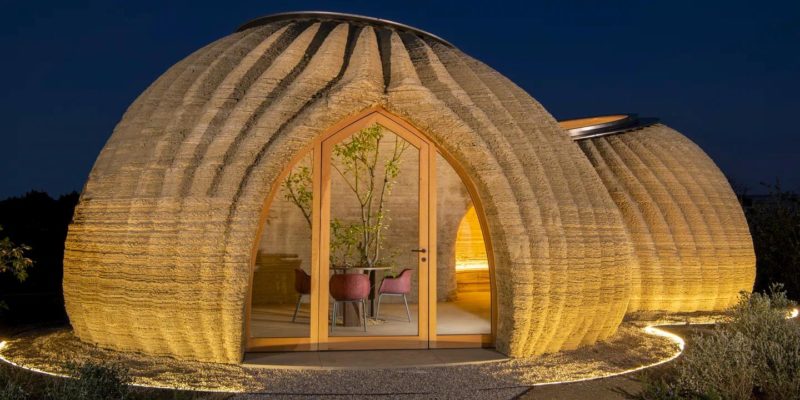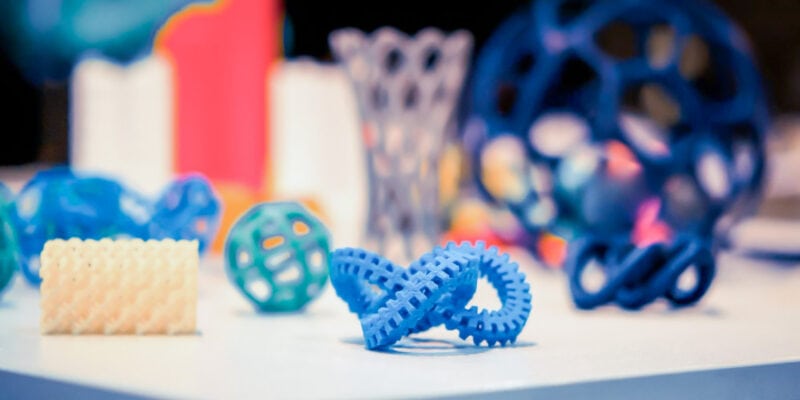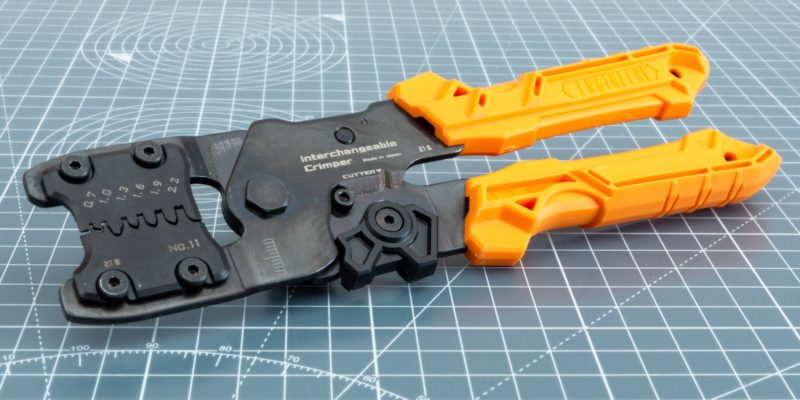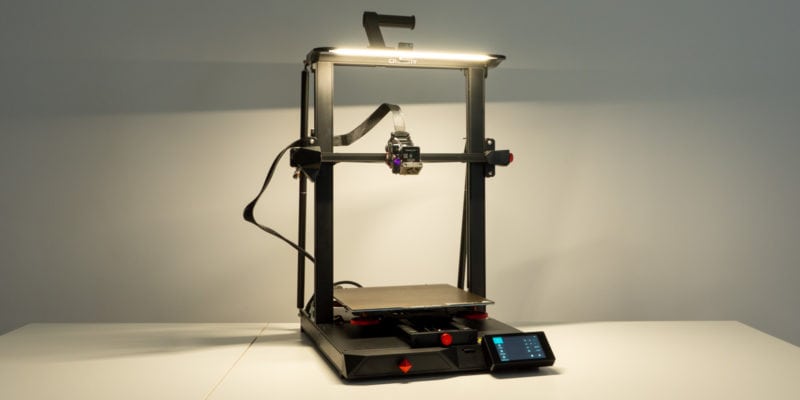3D printed house costs can range anywhere from $10,000 to $400,000. The final price will vary wildly depending on the geographical location, size of the house, land cost, labor cost, electricals, and any furnishings that go in the home.
3D printed homes are a relatively new concept that has started taking roots in recent years. With the ever-increasing housing prices, a 3D printed house could provide a cost-effective and sustainable solution for many new homeowners looking for affordable housing.
Some brand new 3D printed houses can cost almost as half as a traditional one, and they are becoming more and more popular as the technology improves.
3D printed houses are made by using a machine to lay down successive layers of material until the entire structure is complete. 3D printing technology has been around for a few decades now, but it has only recently become advanced enough to be used for printing houses.
In this article, we’ll look at the typical 3D printed house cost, review some of the best housing projects created using 3D printing technology so far, and give you a brief overview of the various costs involved in 3D printing houses.
Read on to learn how 3D printing technology is being used to build the affordable housing of the future!
Examples of 3D Printed Houses and Their Price
ICON- The Chicon House
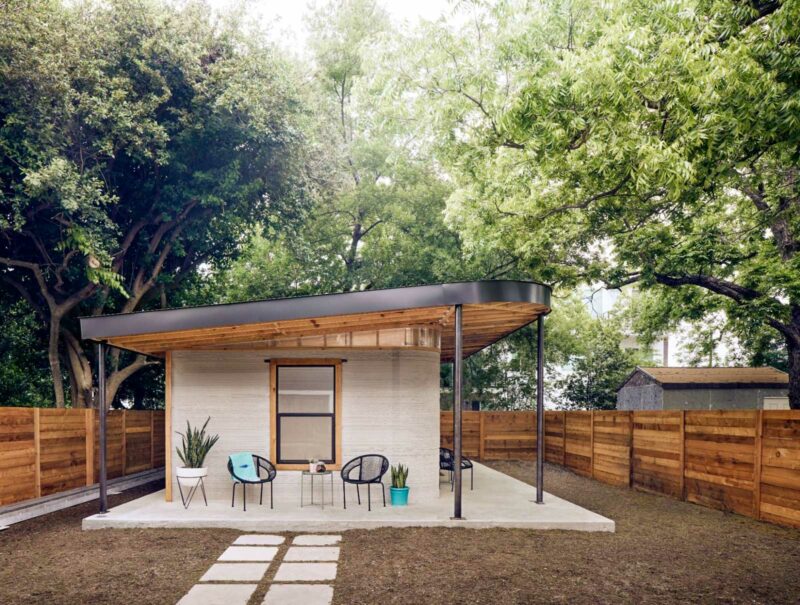
ICON was the first company in the United States to get a permit to build a fully 3D printed house back in 2018. This house was constructed in collaboration with New Story in Austin, Texas, and was meant to demonstrate the practicality of 3D printing in the construction industry.
The Chicon House covers a modest 650-sq ft. (60 m2) area and has two rooms and all the essential amenities. ICON used their VULCAN 3D printer specifically developed for 3D printed houses to construct this project. The VULCAN is a giant 3D printer. using it; ICON was able to 3D print the entire structure within 24 hours.
The cost for 3D printing this house was nearly $10,000 in 2018, and this price excludes the cost of amenities and furniture. Nonetheless, the Chicon House goes to show the affordability of the 3D printed homes and how they can be a viable alternative for those constructed through traditional construction methods.
Alquist Virginia Project
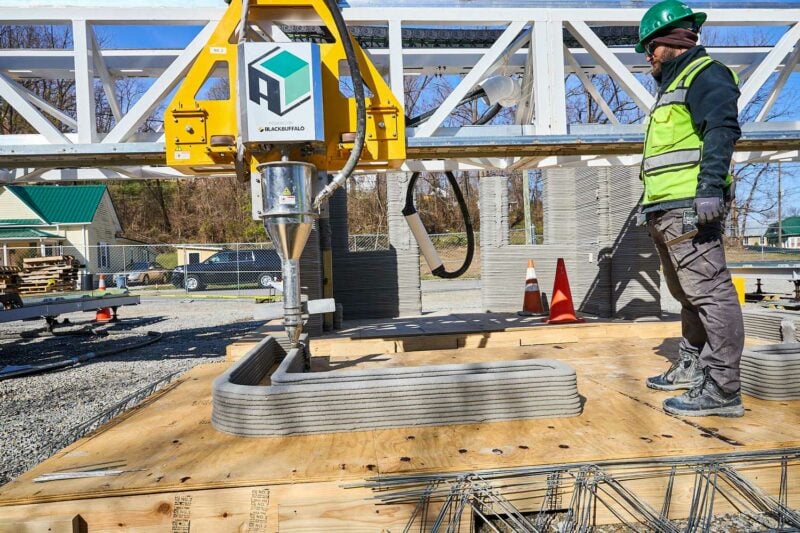
The Alquist Virginia Project is a revolutionary undertaking in terms of 3D printing houses. The company plans to build almost 200 individual 3D printed houses in the small town of Pulaski, Virginia. The entire habitat is supposed to take five years to complete and aims to provide an affordable housing solution for the working population in the area.
Alquist will use Black Buffalo’s NEXCON concrete 3D printer to construct these 3D printed houses. The NEXCON 3D printer has a total build area of about 26 x 26 x 26 feet (2.4 m3), can easily print houses up to three stories, and has a maximum printing speed of 9.8 inches per second.
This speed makes it capable of 3D printing a 1000 sq ft. (93 m2) house in less than 24 hours. The houses are to be constructed in various designs and formats, and the cost can range between $175,000 to $350,000. The final price depends on the individual home’s size, area, and other furnishing costs.
Tvasta: India’s First 3D Printed House
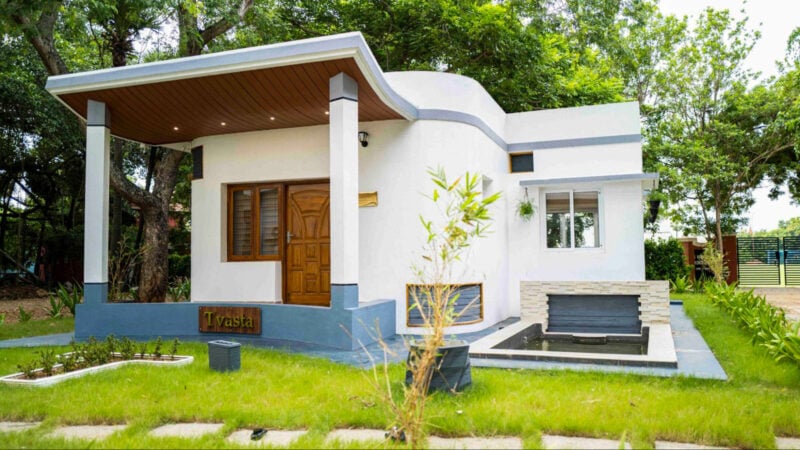
Tvasta is an Indian startup founded by the Alumni of IIT Madras. Like other 3D printed housing projects, Tvasta, too, aims to build cost-effective housing solutions. It plans to achieve cost savings of approximately 80% to build houses in the long run, giving developing nations such as India a genuine alternative to budget housing solutions.
The Tvasta house was built on IIT Madras’ campus ground and covers approximately 600 sq ft. (55.74 m2) of floor space. It was constructed off-site using Tvasta’s concrete 3D printer and comprised several sections. All the units were later brought on site and assembled to form a two-bedroom house with a hall and kitchen.
The entire project took around 21 days, and the overall cost was about ₹ 5-5.5 lakhs ($6,000 – $7000). According to Tvasta, this price is 20% of a traditionally built house in the same area. This project goes on to show the capabilities of Tvasta’s 3D printed homes and will be helpful as a proof-of-concept for building affordable housing in developing countries.
SQ4D 3D Printed Home
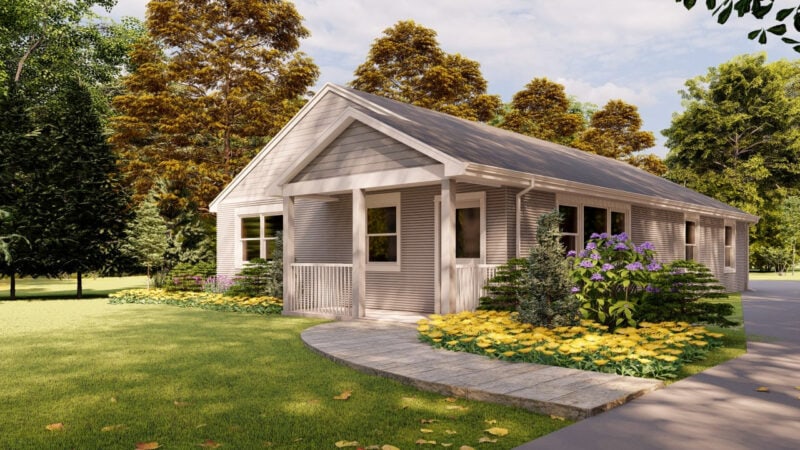
SQ4D’s house was the first 3D printed house in the United States that’s available for sale. The home is located in Riverfront, New York, and is the company’s third project overall.
The general area of the house is around 1400 sq ft. (130 m2), and it comes with three bedrooms and two bathrooms. SQ4D has used its proprietary Autonomous Robotic Construction System (ACRS) for building the house. Using the ACRS, the house was built in under 48 hours and required at most three people to monitor and run the machine.
The project’s total construction cost is $299,000, which according to SQ4D, is approximately half that of similar properties in the area. It’s a more structurally sound alternative to the traditional lumbar constructed houses, and the lesser costs and times involved prove the company’s vision to provide homes at relatively low prices.
How Much Does a 3D Printed House Cost?

The building costs of a 3D printed house vary from anywhere from $10,000 to $400,000. It mostly depends on the geographical location and the size of the 3D-printed house itself. And in most cases, this pricing only includes the construction costs. Additional charges such as lighting, plumbing, painting, and furnishing are often excluded from the total construction cost.
Moreover, it’s not necessary for all 3D printed houses to be listed for sale on the market. For example, the Milestone Project in the Netherlands is a rental property, and a month’s rent costs around €800.00 ($810). It measures just over 1000 sq ft. (93 m2) and has one living room and two bedrooms.
This is one of the cases that can reduce the entry barrier to 3D printed homes, as purchasing is not strictly necessary.
The houses also vary from area to area, so it is difficult to come up with an exact price for a 3D printed house. This is also the reason behind the wide range of the prices of 3D printed homes.
However, you can expect considerable savings in the construction costs of your 3D printed house, owing to the benefits of additive manufacturing. Reduced material cost through the use of recycled concrete, for example, can reduce the exact cost as well.
What are the Benefits of a 3D Printed House?
Similar to 3D printing in the manufacturing industry, there are several benefits of 3D printing a house instead of building it with traditional methods. Let’s look at the significant benefits of a 3D printed house.
Time

One of the most time-consuming tasks in building a house is the construction of walls. With 3D printing through an autonomous robotic construction system, you can save large amounts of time and build a house in weeks or days instead of months. The time savings directly translate to savings in the overall cost of the house.
In 2014, a Chinese company Winsun was able to construct ten houses in just a single day using 3D printing. Another case is the Dubai PMO office that Killa Design built in 2016. The 2700 sq-feet (250 m2) house was built in 17 days by the firm, and it’s estimated that 3D printing cut down the building time of the house by 50-70%.
Similarly, with the Virginia Project, Alquist aims to construct a 1000 sq. ft (93 m2) house in under 24 hours. The Tvasta Project, too, 3D printed and entirely built a home within three weeks. These examples demonstrate that 3D printing significantly reduces the time needed for 3D printing a house and helps to get the house quicker into the market.
Design Freedom
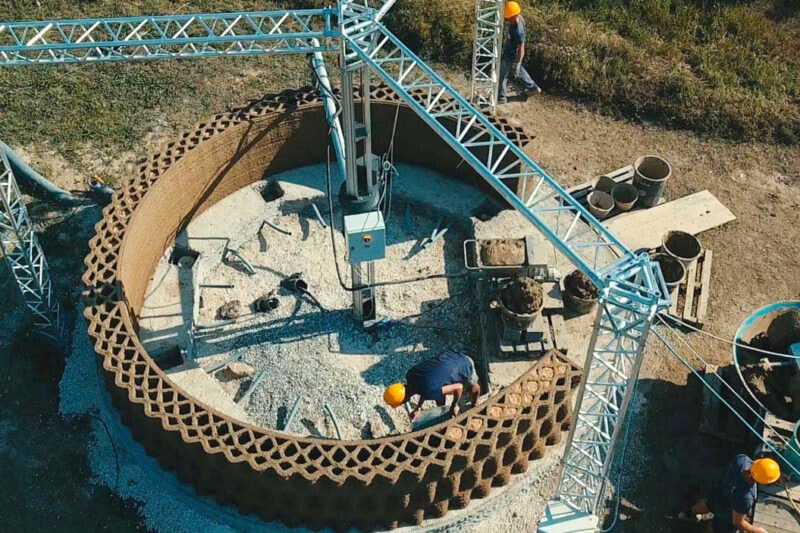
There is not a lot of design freedom in conventional construction, either due to the lack of skilled labor or the limitations in traditional building techniques. 3D printing enables designers and architects to be more creative, resulting in houses that can be customized and designed to each individual’s preferences.
The Milestone Project house in Eindhoven is constructed to resemble a large boulder. The walls flow freely and give the 3D-printed house a unique look. Similarly, the ‘Gaia’ home built by WASP in 2018 has a complicated wall geometry and uneven layers stacked on top. The walls’ complex geometry helps provide natural ventilation to the house’s inhabitants.
3D printing houses truly free the designer from the limitations of the skilled laborer, and it is easy for you to build a house you want for yourself. The unlimited design options and the easy customizability of 3D printed places give it an edge over conventional homes, but also in handy for high-end projects.
Labor Requirements
For building a conventional wooden frame house, you will need at least ten construction workers. Here you can think about carpenters, brick masons, concrete workers, and so on.
With the continuously decreasing number of skilled laborers available, it is becoming increasingly difficult to source good quality labor for building constructions. Add to that the continuously increasing labor costs, and it is no surprise that housing prices have increased astronomically in recent years.
3D printing offers a way out of this crisis by minimizing the labor requirements for building houses. If you decide to 3D print your house, you need at most 3-4 people for the entire process of laying walls.
Those 3-4 people aren’t actively involved in building the walls but act as supervisors and technicians to monitor the 3D printer’s workings. This reduces the need for highly skilled labor and helps to lower the labor costs for building houses, bringing down the overall price.
Even though the initial cost of the concrete 3D printer is something that is significant, compared to continuous wages, insurance, and other benefits that you have to pay the workers, 3D printers are a more economical way of building homes in the long run.
How Long Will a 3D Printed House Last?
3D printed homes are made using concrete, one of the most durable and long-lasting materials available. When 3D printed using the right mix, concrete walls can last for over 100 years. Furthermore, 3D printed homes can be designed to be disaster-resistant, meaning that they can withstand hurricanes, earthquakes, and other natural disasters.
Structural Engineers also use specific methods, such as reinforcing 3D printed houses with Rebar, to give the house additional strength. This adds to their durability and increases their lifespan further than they would otherwise last.
The 3D printed houses that have been constructed so far have shown excellent results in withstanding wear and tear. When maintained properly, concrete houses should be able to last 60 years or longer without any significant issues.
Where to Buy a 3D Printed Home?
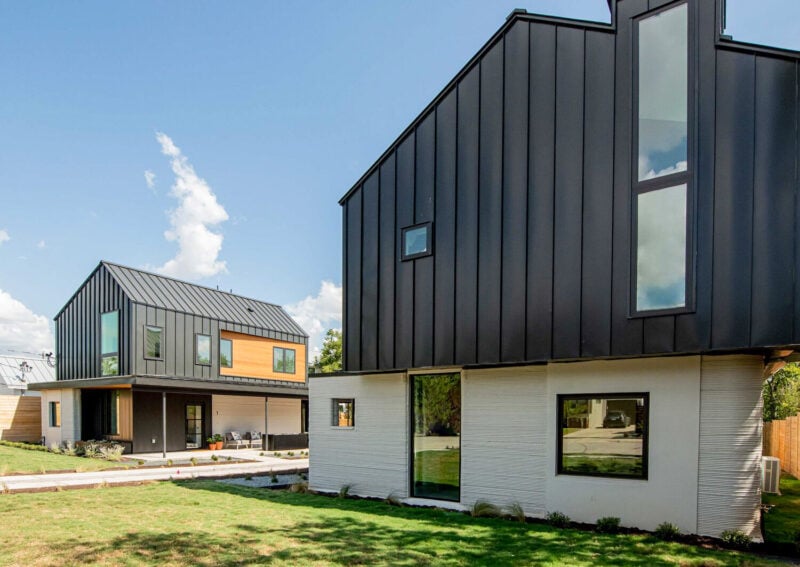
Currently, 3D printed houses are still in their nascent stages, and few projects are available commercially. Most 3D printed houses are located in various regions of the United States. The Alquist’s Project Virginia and the SQ4D’s home are excellent examples of projects ready to buy in the US.
Another upcoming project is the East 17th Street Residences in Austin, Texas, by ICON. Improving upon their first 3D printed house in Texas, ICON now aims to create multiple styles in two-bedroom and four-bedroom homes. These are multi-story homes measuring between 900 – 2000 sq ft. (83 – 186 m2).
Another of ICON’s recent undertakings includes the construction of the largest 3D printed house community in Texas. It plans on 3D printing around 100 houses in the neighborhood of Austin, Texas. These are some of the promising projects in the US if you’re planning on buying a 3D printed home for yourself.
Conclusion
3D printed houses are still in their nascent stages, and it isn’t sure yet when will 3D printed houses be available for the masses. However, the technology is developing at a blistering pace.
Companies are starting to use improved materials, faster concrete 3D printers, and building more innovative houses that fully utilize the benefits of 3D printing technology. And they offer a great solution to affordable and sustainable housing in developing countries.
With the current housing crisis, low-cost construction solutions to build affordable housing are to bring prices down for the masses. 3D printed homes are a viable solution to this problem as they require less labor and construction time while still being durable.
3D printed homes also have the potential to be disaster-resistant which is an essential factor to consider when building in regions that are prone to natural disasters.
That being said, if you’re planning on buying a 3D printer-made house right now, the prices vary wildly and the basic 3D printed house cost can range from anywhere between $10,000 and $400,000. On top of that, you’ll have to consider the cost of land ownership, material costs, furnishing, plumbing, and electrical connections that most of these 3D printed houses will need.
What are your thoughts on 3D-printed houses? Are you planning on buying one, or will you wait till the technology matures a bit and the total 3D printed house cost comes down? Let us know in the comments.



